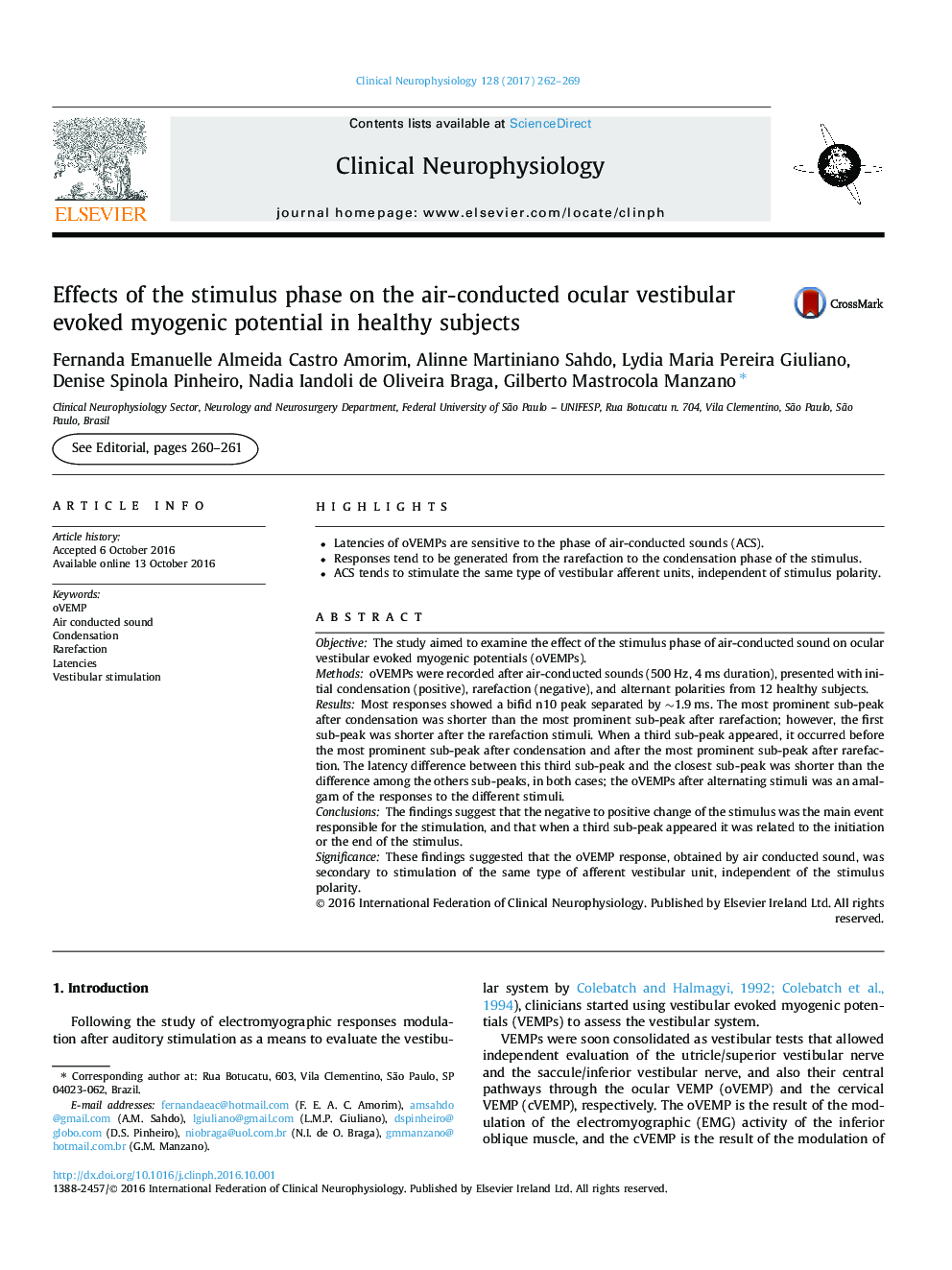| کد مقاله | کد نشریه | سال انتشار | مقاله انگلیسی | نسخه تمام متن |
|---|---|---|---|---|
| 5627453 | 1406347 | 2017 | 8 صفحه PDF | دانلود رایگان |
- Latencies of oVEMPs are sensitive to the phase of air-conducted sounds (ACS).
- Responses tend to be generated from the rarefaction to the condensation phase of the stimulus.
- ACS tends to stimulate the same type of vestibular afferent units, independent of stimulus polarity.
ObjectiveThe study aimed to examine the effect of the stimulus phase of air-conducted sound on ocular vestibular evoked myogenic potentials (oVEMPs).MethodsoVEMPs were recorded after air-conducted sounds (500Â Hz, 4Â ms duration), presented with initial condensation (positive), rarefaction (negative), and alternant polarities from 12 healthy subjects.ResultsMost responses showed a bifid n10 peak separated by â¼1.9Â ms. The most prominent sub-peak after condensation was shorter than the most prominent sub-peak after rarefaction; however, the first sub-peak was shorter after the rarefaction stimuli. When a third sub-peak appeared, it occurred before the most prominent sub-peak after condensation and after the most prominent sub-peak after rarefaction. The latency difference between this third sub-peak and the closest sub-peak was shorter than the difference among the others sub-peaks, in both cases; the oVEMPs after alternating stimuli was an amalgam of the responses to the different stimuli.ConclusionsThe findings suggest that the negative to positive change of the stimulus was the main event responsible for the stimulation, and that when a third sub-peak appeared it was related to the initiation or the end of the stimulus.SignificanceThese findings suggested that the oVEMP response, obtained by air conducted sound, was secondary to stimulation of the same type of afferent vestibular unit, independent of the stimulus polarity.
Journal: Clinical Neurophysiology - Volume 128, Issue 1, January 2017, Pages 262-269
